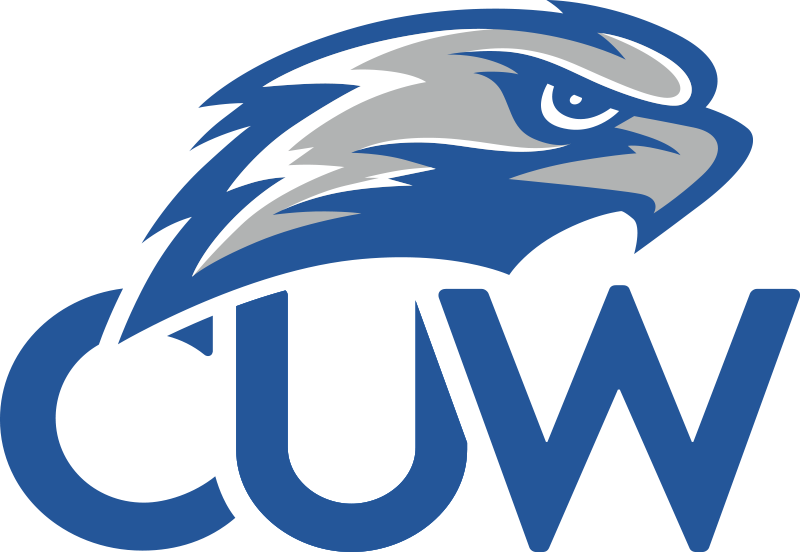Standings are aimed to be released by the end of every Tuesday.
In the 2020 Season, we have 24 technical upsets in 77 ranked matches (68.83% success rate) across 10 events.
The Gonzalez System is a computer ranking model similar to Elo and is a rating exchange system based on research performed by World Rugby. It has been adapted by the NCDA to the demands of College Dodgeball, but can be tuned and customized endlessly to incorporate accurate data. It has been used to help determine seeds for the Nationals bracket since Nationals 2014, and was used exclusively for the each Nationals bracket since 2017.
Technical Upset Spotlight
A technical upset in the Gonzalez System is when a lower rated team defeats a higher rated team. The overall success rate of the system is currently 80.07% based on 377 technical upsets in 1893 ranked matches played since 2010-09-25. There was one technical upset since our last standings update.
VCU def JMU 4-3 (OT)
43.643 (+1) def 47.454, exchanging 0.641 points
VCU was able to pick up a technical upset at home over JMU at the Rowdy Ram Rumble in overtime. The upset ranks 29th out of 67 overtime upsets all time.
Net Rating Changes
| Rating Changes | Pre | Post | Change |
| VCU | 43.643 | 44.541 | 0.897 |
| JMU | 47.454 | 47.544 | 0.090 |
| Towson | 53.931 | 53.962 | 0.031 |
| GVSU | 53.868 | 53.878 | 0.010 |
| WMU | 40.007 | 39.997 | -0.010 |
| UVA | 37.863 | 37.596 | -0.267 |
| UMD | 44.137 | 43.386 | -0.751 |
VCU’s two victories over JMU and UVA were able to give the Rams a healthy boost in their Gonzalez Rating and move them a bit up the standings. Fellow East Coast rivals JMU and Towson also saw their point totals increase, but only by small increments.
While it wasn’t publicized as much, GVSU and WMU also competed against each other this weekend. GVSU was able to take the lone game, and received the minimum possible exchange.
Ratings, sorted.
| Movement | Rank | Rating | Team |
| — | 1 | 53.962 | Towson |
| — | 2 | 53.878 | GVSU |
| — | 3 | 48.493 | CMU |
| ↑ from 5 | 4 | 47.544 | JMU |
| ↓ from 4 | 5 | 47.532 | MSU |
| — | 6 | 46.827 | Miami |
| — | 7 | 46.586 | Ohio |
| — | 8 | 44.679 | SVSU |
| ↑ from 11 | 9 | 44.541 | VCU |
| — | 10 | 43.761 | BGSU |
| ↓ from 9 | 11 | 43.386 | UMD |
| — | 12 | 42.685 | OSU |
| — | 13 | 42.372 | UWP |
| — | 14 | 41.660 | Akron |
| — | 15 | 41.109 | UNG |
| — | 16 | 40.916 | UK |
| — | 17 | 40.424 | ZAG |
| — | 18 | 40.401 | OS |
| — | 19 | 40.023 | PSU |
| — | 20 | 39.997 | WMU |
| — | 21 | 38.875 | UC |
| — | 22 | 38.199 | Kent |
| — | 23 | 37.596 | UVA |
| — | 24 | 36.754 | UNL |
| — | 25 | 36.228 | MC |
| — | 26 | 36.202 | CSU |
| — | 27 | 36.179 | SIUE |
| — | 28 | 36.013 | WVU |
| — | 29 | 35.607 | DePaul |
| — | 30 | 34.833 | BSU |
| — | 31 | 34.032 | GSU |
| — | 32 | 33.877 | GVSU-B |
| — | 33 | 33.713 | NSU |
| — | 34 | 32.793 | MSU-B |
| — | 35 | 32.000 | CMU-B |
Questions about the System
Zigmas Maloni: There’s always a chance to learn something new and evaluate the logic behind the system. I put a request for questions on the Gonzalez system out there over the weekend, and I want to thank the following for their questions.
Felix: You ever talk to Gonzalez anymore?
ZM: Matt Gonzalez is the namesake of the Gonzalez system, an officer of Nebraska Dodgeball and he proposed using the system in 2013. I didn’t ask him permission to name the system after him, but we certainly ran with the idea and expanded the variables and modifiers over the years.
I want to thank him for getting me to be a fan of rugby, if only to figure out the game. It’s pretty cool they used a hundred years of historical results to develop a ranking system to adapt to their needs. I’m still threatening to apply our Gonzalez system to baseball’s mass of records. Further, it’s not just limited me to Rugby. Developing a fair ranking system for the NCDA has involved me watching competition around the world, even applying the system to the World Dodgeball Federation’s standings.
Eric Zander: Can the System be modified so that a team has a maximum rating, like no higher than a 55?
ZM: There is already diminishing returns on rating exchanges. A top rated team like GVSU or Towson have a limited available pool of competitors whose ratings are close enough to have an affect on their rating. It also works on the low end of the Standings, too.
GVSU from about 2014-2018 had the best rating in the League by a wide margin, and struggled to play opponents where the outcome didn’t result in a minimum exchange. A lot of the Content Team likes to note that there is more parity in the League, and over the last two years the system has showed quantifiably that there are more teams able to compete at the top levels. GVSU isn’t the only team competing in a Tier of their own anymore. Teams in Michigan, Ohio, and the East are all able to compete with other similarly ranked opponents, raising the tide for these teams.
There is the possibility that teams can reach a rating in the high 50s and beyond. Overcoming the rate of diminishing returns on winning exchanges is possible if there are larger amount of schools in the League; a larger pool of competitors with larger exchanges would help a Tier 1 team improve their potential maximum rating.
Though, we also have the season carryover modifier, where teams currently retain 75% of their rating after Nationals, and the rest reverts to the mean. This does have an effect on shrinking the gap League’s minimum and maximum ratings (currently 21.962), preventing a team getting too high or too low over a long period.
Jeff Starr: Why do we use a ranking system that values a team’s performances in seasons past over their performance this season?
ZM: Season Carryover is one of the first modifiers introduced into the system at near initial adaptation. The short answer is that taking into account previous results, even if those match results are from the last season, makes the system more accurate. And we can get really into the weeds on this question.
There are a number of sports in the world and a number of systems used to evaluated respective competitors. The NCDA shares much more in common with the irregular seasons of international competition across Rugby, Soccer and Chess than it does with set schedules of USA’s professional sports.
The following chart maps the success rate (technical upsets in ranked matches) across each season, but with different percentages of rating carry over each season.
| 0% | 25% | 33% | 50% | 67% | 75% | 100% | |
|---|---|---|---|---|---|---|---|
| Total | 75.6 | 77.3 | 78.0 | 79.2 | 79.8 | 80.1 | 79.8 |
| 2011 | 76.7 | 76.7 | 76.7 | 76.7 | 76.7 | 76.7 | 76.7 |
| 2012 | 78.6 | 80.9 | 80.9 | 81.7 | 81.7 | 82.4 | 82.4 |
| 2013 | 75.8 | 77.1 | 77.7 | 77.7 | 79.0 | 78.3 | 77.7 |
| 2014 | 83.2 | 85.0 | 85.6 | 86.2 | 87.4 | 87.4 | 85.0 |
| 2015 | 78.3 | 80.0 | 81.7 | 81.7 | 83.9 | 84.4 | 83.3 |
| 2016 | 76.1 | 79.3 | 80.3 | 81.7 | 83.6 | 83.1 | 84.0 |
| 2017 | 72.0 | 73.4 | 73.8 | 75.5 | 76.2 | 76.6 | 78.0 |
| 2018 | 72.6 | 75.0 | 76.0 | 77.7 | 76.0 | 76.4 | 74.7 |
| 2019 | 75.6 | 77.4 | 77.8 | 80.4 | 81.5 | 82.6 | 82.6 |
| 2020 | 68.8 | 66.2 | 67.5 | 70.1 | 68.8 | 68.8 | 68.8 |
At the top header row, zero percent involves resetting a team’s rating to the initial value (40). 100% means that seasons don’t matter. Our current 75% carry over is the most accurate overall. The highest success rate for a given season are highlighted. The 2020 season only includes results to this point, but we can see that across the board, predictability this season is on the lowest end historically, but that may adjust when teams play more matches over the season.
The most important part of the system is that it is a sum of its parts. On average, teams retain about 75% of their roster from season to season, which helps reflect real world “losses” on rosters between seasons. This is just one part of many steps to ensure that the time the system is applied to the Nationals Bracket, it is the most accurate it can be to seed a bracket fairly.
Season Carry over helps reflect the average retention of players from year to year, but the results of a historical match eventually become statistically insignificant. More recent results always have more influence, so the system only values results for as long as it needs to.
See the Resource Center for more documentation.
Records, Master Spreadsheet: 2005-Present
Records, Individual Docs: 2011, 2012, 2013, 2014, 2015, 2016, 2017, 2018, 2019, 2020
Gonzalez System: Exchange Sheet, Spec Doc, Probabilty Calculator

























